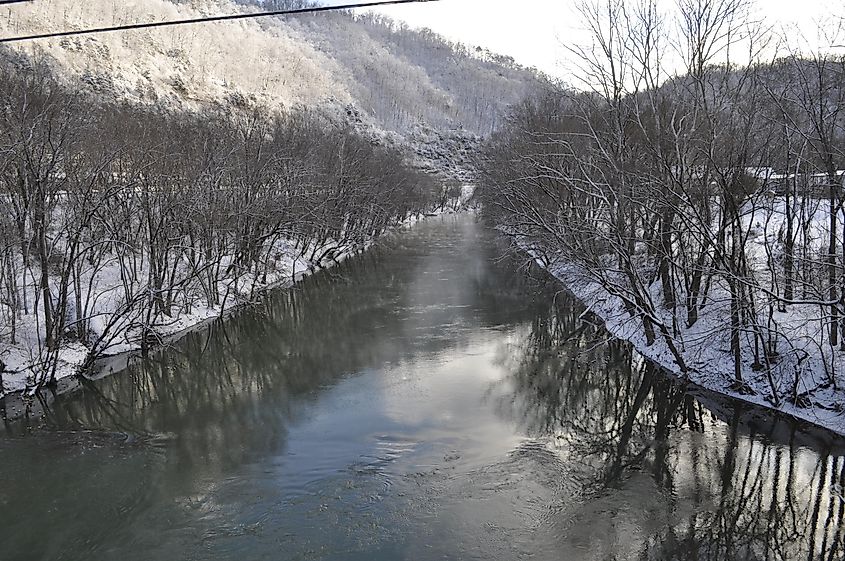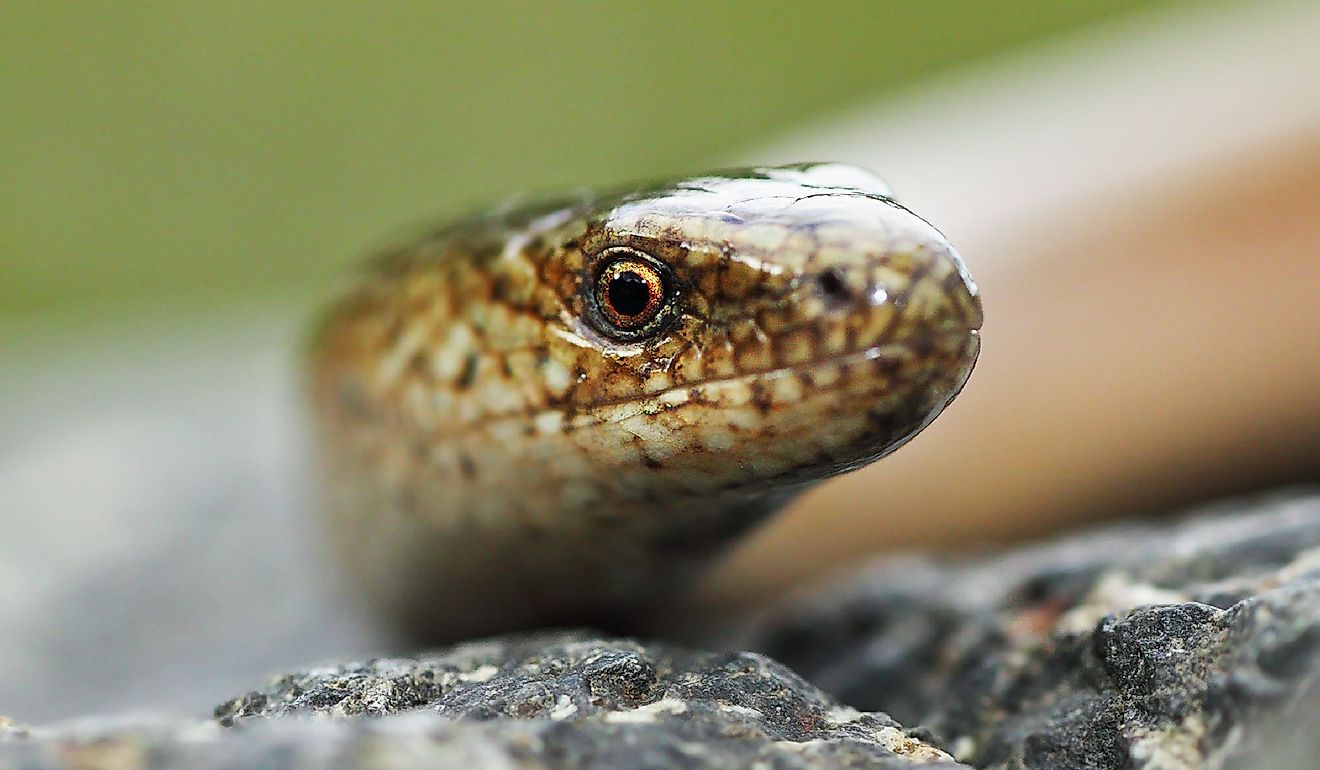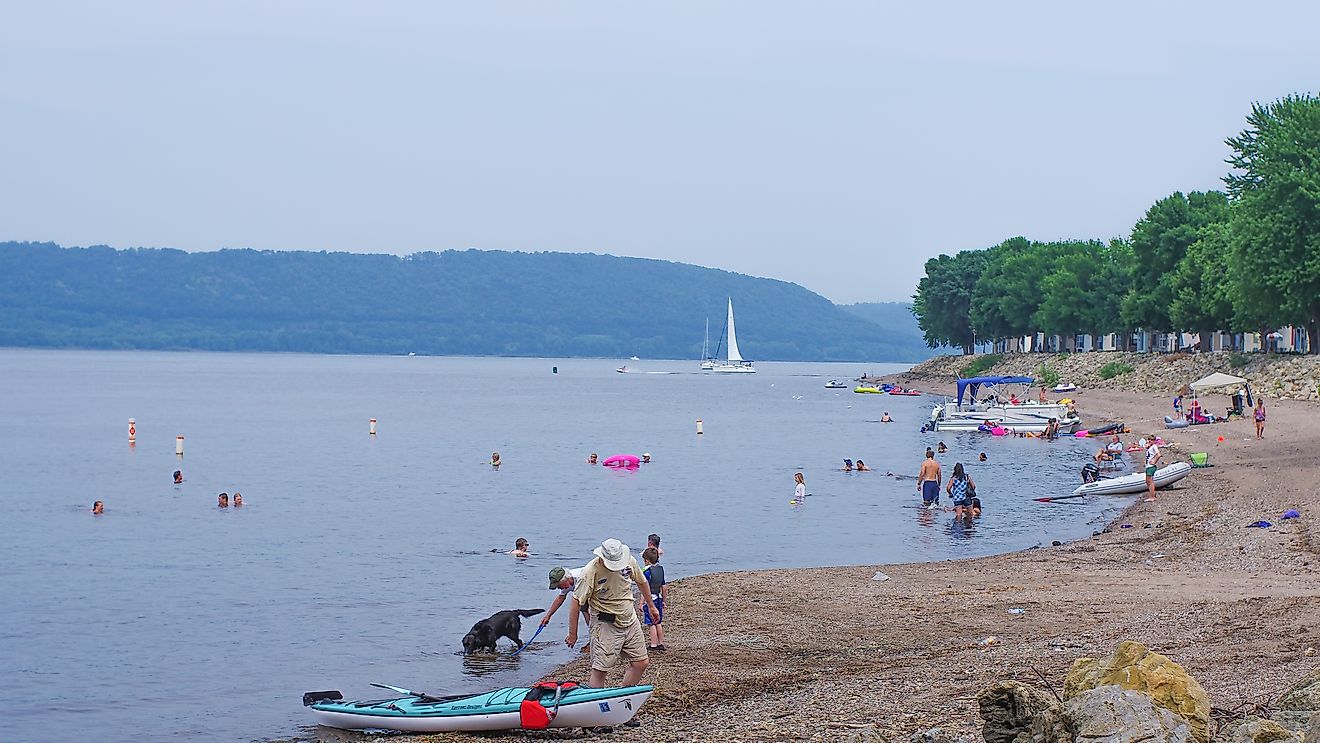
Big Sandy River
The Big Sandy River, a northward-flowing tributary of the Ohio River, is not particularly big—it only runs for 27 miles, although its two main tributaries run for more than 150 miles. The river is sandy, though, as it is filled with sandbars caused by runoff from the surrounding Cumberland Mountains of Kentucky, Virginia, and West Virginia. While the Big Sandy River region continues to play a role in the coal industry, it is better known today for its outdoor recreation opportunities. The Big Sandy waterway's streams, lakes, forests, trails, and state parks provide a range of ways to experience the region's natural beauty.
Source And Course Of The River

The Big Sandy River begins in Louisa, Kentucky, at the confluence of two forks: Levisa Fork, which runs for 164 miles into southwestern Virginia (as Russell Fork), and Tug Fork, which runs for 154 miles into southwestern West Virginia. From the confluence at Louisia, the Big Sandy runs mostly northward for 27 miles and empties into the Ohio River at Catlettsburg, Kentucky. The Big Sandy River and Tug Fork form the entire boundary between Kentucky and West Virginia, while Ohio is directly across the Ohio River from Catlettsburg. Roughly 4,140 square miles of land drain into the Big Sandy River via Tug Fork, Levisa/Russell Fork, and smaller tributaries.
Big Sandy River Ecosystem
The Big Sandy River and its tributaries twist and turn through the rugged terrain of the Cumberland Mountains of Kentucky, West Virginia, and Virginia, generally running from south to north to reach the Ohio River at Catlettsburg, Kentucky. Like other parts of the Appalachian Plateau, the mountains are rich in coal deposits. The Big Sandy's shorelines remain heavily forested with beech, hemlock, magnolia, hickory, birch, maple, chestnut, oak, and other trees. These forests house animals, including bald eagles, turkeys, rabbits, white-tailed deer, elk, and black bears. The Big Sandy waterway and its human-made lakes support many fish species, such as catfish, sunfish, crappie, bass, walleye, muskie, and trout.
The Naming Of The River

The Big Sandy River got its current name for an unsurprising reason: it has lots of sand in it! Erosion of the mountainous landscape by the river's tributaries leads to a great deal of sand flow into the Big Sandy. Especially before dams were added to the tributaries, large sandbars frequently formed along the bottom of the Big Sandy and were exposed during low water periods. The sandbars made river travel challenging in earlier times, especially during low water, and required frequent reliance on flat-bottomed boats. Local Native Americans called the Big Sandy some variation of the name Chatarrawa, which might be translated as "river of sandbars."
Human History Along The River
Native Americans of the ancient "Mound Builder" cultures lived in the area of the Big Sandy River up to 3,000 years ago. Still, by the time of Euro-American colonization, the area was primarily a hunting ground for Cherokee and Shawnee peoples. The first American settlers arrived in the 1780s, but the area was slow to develop due to the rugged terrain and ongoing hostilities with Native Americans. Most residents were subsistence farmers until the arrival of both the railroad and the coal mining industry in the 1880s, and mining remains the primary industry today. Also, in the 1880s, Tug Fork was the dividing line between the families involved in the infamous Hatfield-McCoy Feud.
Dams, Lakes, and Parks

Three artificial lakes, created by dams, are on the Kentucky waterways that feed the Big Sandy River (but no dams on the river itself). Fishtrap Lake, which varies in size from about 800 to 1,200 acres, was created by a 195-foot high dam built on Levisa Fork in 1962. A dam completed in 1983 on Paint Creek (which feeds into the Big Sandy) created the 1,100-acre Painstville Lake, the focal point of Paintsville Lake State Park. This Kentucky state park includes campgrounds, trails, and other amenities. Yatesville Lake, dam-created in 1992 and located 5 miles west of Louisa, Kentucky, on another tributary of the Big Sandy (Blaine Creek), is part of Kentucky's Yatesville Lake State Park. The lake ranges from roughly 1,700 to 2,200 acres and contains three islands.
The Big Sandy River has a colorful history, from its time as a home for the ancient "Mound Builders" to its important role in the Hatfield-McCoy Feud of the 1880s. What the Big Sandy lacks in length, water flow, and commercial importance, it makes up for in natural beauty. While residents of the Big Sandy region have experienced a hefty share of hard times over the centuries, visitors are presented with ample opportunities to experience the natural wonder of this meeting zone of the Cumberland Mountains and the Ohio River Valley.











